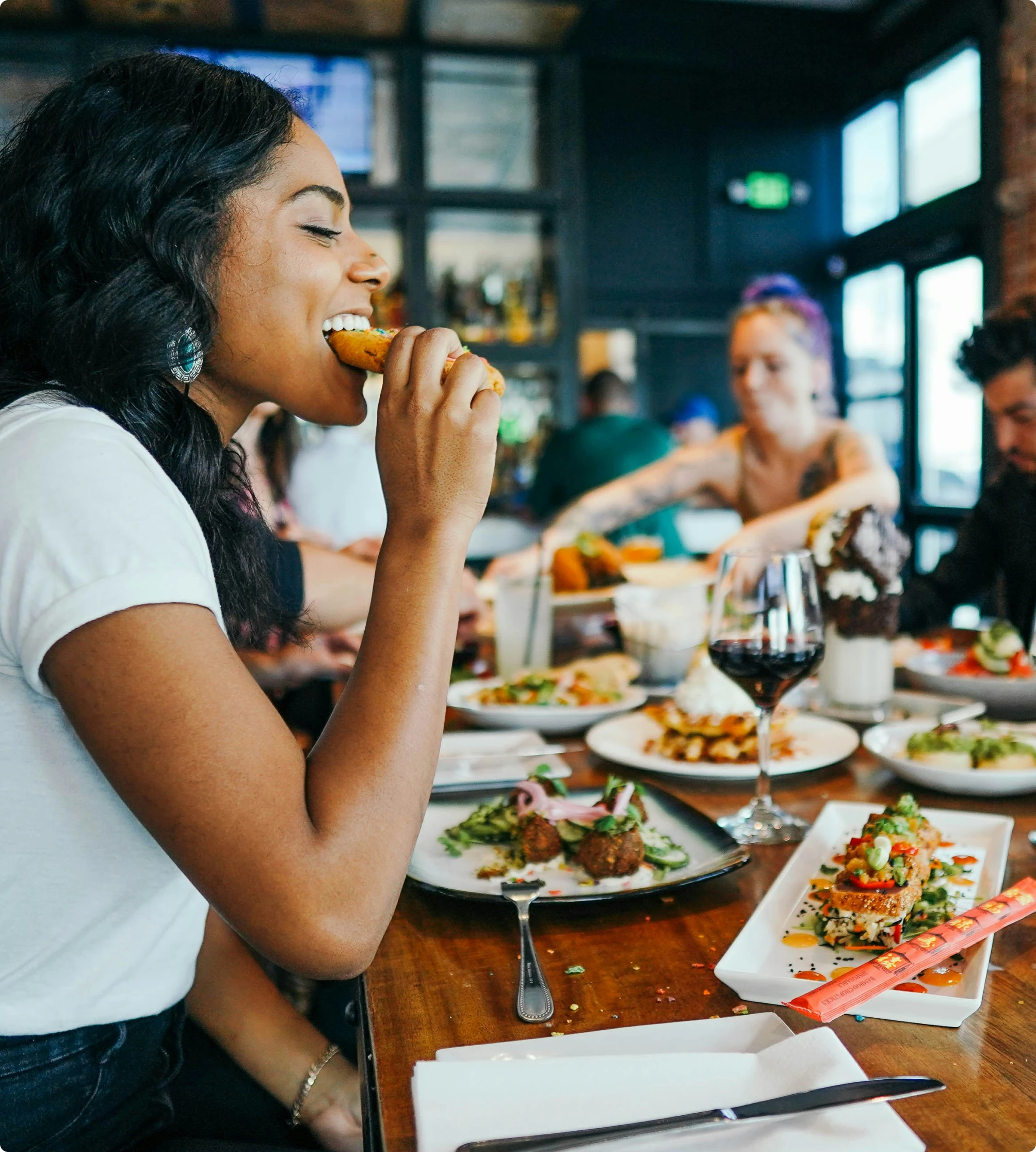



Block and Estate Management is about the minutia done well: the role of a Managing Agent is technical, administrative, practical and political. It takes joined up thinking to do what we do well as well as sufficient resource to react to whatever is necessary day-to-day.
As a Managing Agent we know our true business is building relationships with people. Our people are empowered and know that they can make a difference to how people feel about where they live. We call our 'Property Manager's 'Relationship Managers’ to embody our values which are to build relationships, add value, and to take the initiative. We lead the market in transparency and focusing on risk, cash, repairs and place making, usually in that order, and was the first Managing Agent to introduce a ' money back guarantee ’.
Being who we are would be impossible without our passionately committed people, whose qualifications we sponsor and who we support professionally to be the best they can be, as achieving a national training award and our Silver IIP status confirms.




Transition: Our problem not yours
Our onboarding team will visit site to catalogue what we need to manage, set up budget templates, benchmark and database key lease clauses, and for complex sites our Facilities Management team will also inspect to understand in detail plant and equipment on site. Ringley Law will set up company and ownership registers all ahead of your nominated Relationship Manager taking over.
Block Management Packages
An online service, like internet banking: we run demands, arrears, service charge accounts & legal admin, you set the budget and upload invoices to pay
How to change Managing Agent
Changing Managing Agent needn’t be daunting, we have a team dedicated to gathering information, benchmarking leases and setting up plant registers
Learn moreRingley’s Top 10 Tips
There’s a lot you need to know to run the service charge properly: politics, law, building pathology, financial accounting, company matters, here’s a few tips
Learn moreCan’t afford a Managing Agent?
We understand the minimum fees of a full block management service may be prohibitive to small blocks – that’s why we created
www.servicechargesorted.co.uk

The Ringley Group is regulated by all three major bodies - Royal Institution of Chartered Surveyors (RICS), the Solicitors Regulation Authority, and the Financial Conduct Authority.






We have professional memberships in The Property Institute, The Association of Rental Living, The Institute of Fire Safety Managers, Chartered Association of Building Engineers.








We empower teams out on site
Site staff are the eyes and ears of the developments we manage, they are fully connected to our customer relationship management systems. The work they do is visible to residents, e.g., day books and end of shift inspections on the Ringley Gateway portal.
We see success as the emotional connection of each resident to where they live, so the task is simple... to empower site teams to make a difference on resident at a time.
We hire and place a range of site staff including: Concierge, Caretakers, Housekeeping, Cleaners, Gardeners, Maintenance Engineers and more…
read more about site staff solutions

Block Management Reviews

"Outstanding Support and Professionalism from the lettings advisor. I had a wonderful experience with the lettings advisor who went above and beyond to help us view and understand everything about the flat we were interested in. From the very beginning, she was friendly, approachable, and incredibly knowledgeable. They made the whole process smooth and stress-free. She was very accommodating with viewing times, answered all of our questions patiently, and gave us honest, helpful advice."
| hamza Mughul 133 days ago |

"A member of the Ringley Property Management team attended today to search for mechanical buzzing in my property. He found it withing 5 minutes and resolved the issue."
| Mike Keam 132 days ago |

"We have had a problem with noise from the flat above us in Lady Isle House Ferry Court Cardiff. We contacted a Mr Paul Staniforth who immediately became involved and addressed the situation. We really do appreciate what he has done for us and cannot thank him enough. Once again a big thank you to Mr Staniforth. The noise above was intolerable."
| Shane, 2 days ago |
|
|
We work alongside those deploying capital: our VirginLand by Ringley identify sites, our capital markets team work on equity and debt, our Asset Managers act as Employer’s Agent during the build for Project Monitoring. Towards Practical Completion we will be preparing always to mobilse new assets, take plant handover, recruit great teams and lease up fast.
|
|
We work to enhance the value of our Client’s asset and demonstrate good governance. To us this means engaging with leaseholders, residents and other stakeholders to ensure they are engaged with the management of each development.
|
|
Our aim is to make Management Company Directors feel empowered: to us this means 100% transparency and advising them of the options available to support decision making. We know volunteer directors have a day job, so work to delivery what they need in a timely manner and guide them on the decisions we need.
|
|
Within The Ringley Group we have a range of professional practices to enable transactions: Land Find, Valuers, Surveyors, Engineers and of course Ringley Law.
We work closely with official receivers, asset owners, lenders and tax consultants to support property owners throughout each assets lifecycle. |
Ringley is a group of companies. We are a diverse bunch with far reaching expertise in law, engineering, fire surveying and facilities management. Our data-led in-sourced model will save you money and we will listen, understand your goals and get things done. We are innovative and solutions oriented.
- 100% transparency
- to find solutions
- focused committed people
As a group of companies we are a diverse bunch with enough experts on board to be a one-stop-property-shop. We listen and align to each Client's goals so each of us knows what needs to be done all the while remaining innovative and solutions oriented - as a team - One Ringley.
- 100% transparency
- to network and find solutions
- focused committed people
Our Block Management Team
The key to our success is our people.

Best places to eat out in Pinner

History of Pinner

Most prestigious roads in Pinner

Things to do in Pinner

Cultural Scene in Pinner
Pinner, located in the London Borough of Harrow, is a charming suburban area that offers a perfect balance of rural tranquillity and urban connectivity. Historically a small village, Pinner has retained much of its village character, with cobbled streets and period properties, making it an attractive choice for families and professionals alike. Over the years, the area has seen steady development, with new housing estates and modern apartment buildings complementing its traditional charm. As Pinner's popularity continues to grow, the demand for residential properties has increased, creating a need for professional block management services to ensure the upkeep and smooth running of these developments.
In recent years, Pinner has experienced a resurgence in real estate interest, driven by its peaceful setting, excellent schools, and strong transport links to central London. The local real estate market now offers a range of properties, from charming period homes to modern flats and townhouses. As more residents move into the area, efficient block management has become an essential service, helping to maintain the area’s high living standards and the quality of residential spaces. With its combination of leafy streets, access to green spaces, and easy connectivity to London, Pinner remains a highly desirable location for homebuyers, with property management playing a key role in supporting its ongoing growth and appeal.
Visit our main Pages
Ringley Group
Block management
Asset Management
Leasehold Guidance
Ringley Law
Pinner, located in the London Borough of Harrow, is known for its charming village atmosphere and picturesque streets. Pinner’s prestigious roads offer elegant homes, green spaces, and a strong community spirit. Pinner remains a highly desirable area for families and professionals seeking suburban tranquility close to London.
Wood Lane is one of Pinner’s most sought-after roads, featuring spacious detached and semi-detached homes set among mature trees. Its peaceful environment and family-friendly vibe make it especially popular.
High Street runs through the heart of Pinner and boasts a mix of historic cottages and elegant period homes, offering convenient access to boutique shops, cafes, and transport links.
Chapel Lane offers a selection of charming period properties and modern houses, prized for their generous gardens and quiet residential setting.
Pinner Hill Road is known for its attractive detached homes and proximity to Pinner Park, providing residents with ample green space and a serene atmosphere.
West End Road features a blend of traditional and contemporary homes, popular for its strong community feel and easy access to local schools and amenities.
Pinner’s prestigious roads reflect the area’s blend of historic charm and suburban comfort. These streets offer spacious homes, lush surroundings, and a welcoming community. For those seeking a refined and peaceful London neighbourhood, Pinner remains a top choice. Pinner continues to enchant residents with its timeless appeal.
Visit our main Pages
Ringley Group
Block management
Asset Management
Leasehold Guidance
Ringley Law
Pinner, a quaint suburban area in northwest London, is known for its village charm and welcoming community vibe. The dining scene here offers a mix of traditional pubs, cosy cafés, and diverse international eateries. Whether you’re after a relaxed brunch or a hearty dinner, Pinner has plenty to choose from. Here are some of the best places to eat in Pinner:
The George in Pinner – A historic pub serving classic British dishes, seasonal specials, and a wide selection of ales in a friendly atmosphere.
The Plough in Pinner – A cosy village pub known for its well-crafted pub food, Sunday roasts, and vibrant beer garden.
Côte Brasserie in Pinner – A French-inspired bistro offering dishes like steak frites and seafood platters in an elegant yet relaxed setting.
The Anvil in Pinner – A modern gastropub focusing on British classics with a contemporary twist and an extensive drinks menu.
The Green Man in Pinner – A traditional pub with a warm atmosphere, serving hearty meals and hosting regular events.
O’Neill’s in Pinner – An Irish-themed pub offering comfort food, lively music nights, and a great range of drinks.
The Granary Kitchen & Bar in Pinner – A stylish café and bar serving brunch favourites, freshly brewed coffee, and light bites.
San Marco Ristorante in Pinner – An Italian restaurant popular for its authentic pasta dishes, wood-fired pizzas, and friendly service.
Toby Carvery in Pinner – A family-friendly restaurant specialising in classic British roast dinners with generous portions.
Wok & Go in Pinner – A casual spot for quick, fresh Asian street food including noodles, rice dishes, and stir-fries.
Pinner Village Bakery in Pinner – A local bakery known for its delicious breads, pastries, and cakes, perfect for breakfast or a sweet treat.
Chaiiwala in Pinner – A vibrant café serving Indian chai teas, snacks, and street food-inspired dishes.
Costa Coffee in Pinner – A popular coffee chain ideal for takeaway drinks and light snacks on the go.
The Stag in Pinner – A traditional British pub with a relaxed vibe, offering classic pub grub and real ales.
Little India in Pinner – A cosy Indian restaurant featuring rich curries, tandoori dishes, and vegetarian options.
Pinner’s dining options reflect its charming village atmosphere and community spirit, offering something for everyone, from hearty pub meals to international flavours and casual cafés.
Visit our main Pages
Ringley Group
Block management
Asset Management
Leasehold Guidance
Ringley Law
Pinner, located in the London Borough of Harrow, is a picturesque suburban area known for its historic charm and village atmosphere. With green spaces, local events, and cultural venues, Pinner offers a variety of activities for both residents and visitors.
Here are some of the top things to do in Pinner:
Pinner Memorial Park in Pinner: Relax in this well-kept park featuring playgrounds, sports facilities, and peaceful gardens.
Pinner Village in Pinner: Explore quaint shops, boutiques, and independent stores in this charming high street area.
Pinner Library in Pinner: Join community programs, workshops, and book clubs at this local cultural hub.
Pinner Market in Pinner: Browse fresh produce, crafts, and local goods at this regular outdoor market.
The Pinner Players Theatre Group in Pinner: Enjoy local drama productions and theatrical performances throughout the year.
Hatch End and Pinner Cycle Routes in Pinner: Discover scenic cycling paths linking Pinner with nearby neighborhoods and parks.
Pinner Village Festival in Pinner: Participate in this annual event celebrating local arts, music, and community spirit.
Pinner Cricket Club in Pinner: Watch or join cricket matches at this historic local sports club.
Pinner Wood near Pinner: Take nature walks and enjoy the tranquility of this small woodland area.
Pinner Hill Garden in Pinner: Visit this community garden known for its beautiful flowers and peaceful atmosphere.
St John the Baptist Church in Pinner: Explore this historic church with regular services, concerts, and community events.
Pinner Green Gym in Pinner: Volunteer in maintaining local green spaces while staying active and social.
Pinner Art Group Exhibitions in Pinner: View artwork by local artists in regular exhibitions and events.
Pinner Memorial Hall in Pinner: Attend community events, classes, and social gatherings at this popular venue.
Nearby Ruislip Lido near Pinner: Enjoy a sandy beach, nature trails, and water activities just a short trip away.
Pinner’s blend of history, community activities, and natural beauty makes it a delightful place to explore and enjoy year-round.
Visit our main Pages
Ringley Group
Block management
Asset Management
Leasehold Guidance
Ringley Law
Pinner boasts a rich and welcoming cultural scene, rooted in its historic charm and village-like atmosphere. Pinner’s cultural life is centred around its theatres, galleries, and community halls, which host concerts, exhibitions, and seasonal events. These creative offerings highlight the artistic spirit that defines the heart of Pinner.
Music is a strong feature of life in Pinner, with churches, schools, and local venues holding regular concerts and recitals. Pinner’s music scene includes classical performances, jazz nights, and community choirs, adding rhythm and joy to local life. Music in Pinner brings together residents across generations.
Pinner celebrates its literary and historical heritage through local museums, libraries, and heritage walks. Pinner frequently hosts author readings, book clubs, and talks exploring its rich past. The blend of tradition, creativity, and community makes Pinner a culturally vibrant and inspiring place to live.
Visit our main Pages
Ringley Group
Block management
Asset Management
Leasehold Guidance
Ringley Law








































